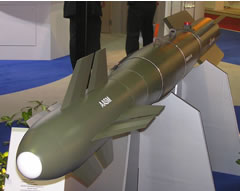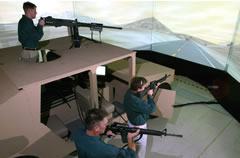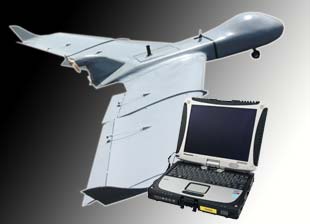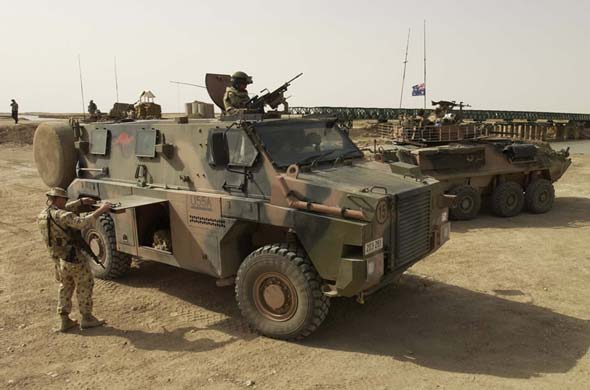This mini UAV was developed by Cyberflight as a lightweight remotely piloted or autonomous platform, launched from a 40 meter runway, at a weight of 25 kg on missions up to 100km. The UAV is operated by an autonomous control system supporting up to six hours mission patrolling predefined GPS waypoints. The CyberEye has an on-board digital recorder which enables “silent” operations (without electronic emission). CyberEye can patrol or loiter over a designated target at low speed (20-25 mph) at altitude of up to 10,000 feet. Another UAV developed by the company is Cyber-1. Utilizing an advanced bi-plane design, Cyber-1 is smaller and more efficient than CyberEye. The aircraft weighs 8.27kg (including 12 pound payload), and can operate from a 15 m’ strip, to a range of 50km. Cyber-1 also uses an autonomous GPS based mission control system, and digital recording for silent missions. Maximum speed is 100 km/h and operational height is 1,000 feet above ground.
LIQUIDMETAL Amorphous Alloys
The modification of the physical properties of armor of steel made, or titanium based alloys, is achieved through a new fabrication technique called Liquidmetal. This process produces advanced alloys at lower temperature, offering twice the strengths characteristics of titanium at a processing efficiency of plastics.
Liquidmetal was one of the possible approaches which can be used to compose the basic structural assembly of FCS. Such structure could use integral, composite laminate armor elements and modular add-on composite armor suites, which could be upgraded or modified to counter specific threats. In September 2006 Liquidmetal Technologies received a US$2 million US Navy contract to fund a 24 months development program of Titanium based composite alloys. The new alloy will have very high strength, corrosion resistance and net-shape forming capabilities based on proprietary Liquidmetal alloy technology. Such alloys could have various applications ranging from fasteners to lightweight structures used by both defense and commercial industries. Lockheed Martin – Missile and Fire Control Systems is sub-contractor on this project.
Since those days Liquidmetal Technologies has partnered with other DOD agencies and contractors to enhance defense and tactical product performance. Alloys have now demonstrated 2-3 times the strength of both stainless steel and titanium, yet can be molded like plastic into complex shapes and parts.
Liquidmetal alloys and composites material properties are highly beneficial for numerous Space, Air, Land and Sea applications. The Liquidmetal optimized process, chemistry and atomic structure enables near net-shape processing characteristics making the fabrication of highly sophisticated and complex structures possible while eliminating most secondary machining and processing.
Liquidmetal also have done work with the US Army developing penetrators and armor piercing shells. The Kinetic Energy Penetrator (KEP) rod designed to replace Depleted Uranium (DU) penetrators currently used in armor piercing ammunition, due to its high density and self-sharpening behavior. Ballistic tests conducted by the Army have proven that the Liquidmetal composites exhibit self-sharpening similar to the DU KEP, but environmentally benign KEP rods. The high strength and lightweight attributes of Liquidmetal alloys will enable the development of lighter, smaller and more cost effective ammunition.
The properties of amorphous alloys as developed by Liquidmetal Technologies, Inc. make these matrerials suitable for many defense applications. Properties such high yield strength, high Hardness and high strength to weight ratio and superior elastic limit, compared to metallic structures. As a non magnetic material, with high resistance to corrosion and wear and unique acoustical properties, it also has specific applications in naval and underwater applications. Low melting temperature enables net-shape casting and fabrication process similar to plastics.
Liquidmetal Technologies’ amorphous alloys were initially developed from research jointly funded by NASA, the California Institute of Technology and the U.S. Department of Energy. The alloy presented a new class of material that is sparking an industrial revolution much in the same way as the invention of steel or plastics.
AGILITY – Mobile SATCOM Terminal
The AGILe Information Transfer abilitY – AGILITY on-the-move satellite terminal was developed by BAE Systems, in partnership with Roke Manor Research and QinetiQ. Utilizing electronically beam-steered antenna packed into a 40 cm sphere, the static antenna offers full hemispheric coverage and high bandwidth. The system offers secure and assured satellite communications (satcom) to-and-from land vehicles, aircraft, unmanned aerial vehicles and naval vessels. The system has near instant deployment and satellite acquisition times. It automatically tracks the satellite, by implementing platform motion compensation.
The antenna structure is based upon a modified dodecahedron comprising 40 identical triangular tiles, each of which contains six cross-dipole elements. This design approach provides a high proportion of active elements for any steer direction. The modular tile concept enables reconfiguration to meet semi-conformal applications for aircraft or unmanned aerial vehicles. Beamforming and steering are performed at element level using custom MMIC (Monolithic Microwave Integrated Circuit) devices specifically designed for AGILITY. These act as digitally controlled phase shifters, as well as providing an LNA (Low Noise Amplifier) on receive and PA (Power Amplifier) on transmit.
For communications on the move, an on-board inertial navigation sensor provides real-time measurements of the vehicle attitude and heading. These are used to calculate a beam pointing angle that compensates for the vehicle orientation. From this, the phase data is calculated and distributed to the MMICs on each tile. This operation is conducted over 20 times per second to providing agile beam steering. The system is expected to be ready for fielding by 2004.
Hornet Real-Time Targeting (HART)
The US Navy and Boeing are developing the Hornet Autonomous Real-time Targeting (HART) system, based on the Hornet’s on-board radar imaging capability. The system will enable aircrews to designate targets and deploy JDAM independent of pre-planned mission requirements. The Navy plans to deploy HART on aboard the F/A-18E/F Super Hornet. The HART precision guided kit includes an infrared sensor, a processor, and image-matching software. Using the Active Electronically Scanned Array radar system built into the Super Hornet, the pilot will be able to acquire and designate a target and transfer a reference image of the target to the weapon. After release, the weapon compares the reference image to that in its sensor’s field of view, guiding it to the point designated in the target scene. Boeing plans to begin low rate initial production of the HART in late 2006, with initial operational capability expected in December 2007. Boeing expects to produce about 6,600 HART units through 2011.
Hammer – Armament Air-Sol Modulaire (AASM)

An advanced precision guided air/ground weapon – Armament Air-Sol Modulaire, is developed by Sagem for the French Air force. The weapon dubbed ‘Hammer’, is designed in both glide and powered configurations, offering standoff capability exceeding 50 km when released from high altitude and 15km, in low altitude flight profile. AASM is designed to replace AS-30L laser guided missiles, and complement the Scalp EG, as a low cost weapon. The basic configuration uses a GPS/INS navigation kit, strapped to a standard 500 pound warhead (such as Mk 82 bomb). The initial configuration which will be fielded by early 2005, will offer JDAM-class precision, and all-weather capability, while follow on versions that are scheduled for fielding by 2007 will also include passive IR guidance which will offer an accuracy compatible with laser guided weapons. A laser-guided version of the AASM is also in development, enabling attack of targets of opportunity, including mobile targets.
In a first operational test conducted December 1, 2006 GPS/INS guided AASM was dropped from a Mirage 2000 N at the Biscarosse Launch Missile Test Center in the southwest region of France. The weapon was dropped at low altitude, high speed and under strong load factor, thus validating the AASM’s GPS/INS guided version’s performance in difficult, tight maneuvers.
In May 2008 MBDA France and Sagem Défense Sécurité signed a cooperation agreement shifting the sales and marketing of Sagem’s modular air-to-ground weapon (AASM) to MBDA. and infrared guidance for tactical missiles. Under the terms of the agreement, MBDA France will be responsible for all sales and marketing of the AASM family developed by Sagem Défense Sécurité. The two companies will also combine their respective areas of expertise to form a close partnership for the joint development of future versions of the AASM family.
Sagem has been awarded a contract to supply 3,400 AASM Air-to-Ground Weapons to equip the French Air Force Rafale aircraft. The order also covers the initial order of 680 weapons. This latest order follows the initial contract won by Sagem for 750 AASMs to be delivered to the French air force. The AASM has been deployed on Rafale fighters in Afghanistan for the last two years.
The basic version will integrate an upgraded, GPS module and be prepared to receive an Inertial/GPS and laser terminal guidance systems. The new multi-sensor guided version expands the AASM family, which already includes two versions qualified on the Rafale multirole combat aircraft, with inertial/GPS or inertial/GPS/infrared guidance. In particular, the new version enables precision strikes against moving targets. The AASM weapon family comprises kits and augmentation kits fitting 1,000, 500, 250, and 125 kg bombs.
Launched from standoff distance, day or night and in all weather conditions, the AASM offers a range exceeding 50 kilometers. The AASM can be released at low altitude, and can also be fired off-axis, in relation to the aircraft’s flight path. It offers very high precision and strikes its target vertically, a feature suited to asymmetrical conflicts. This makes it the perfect weapon for combat in difficult terrain or urban environments, for both planned missions and opportunity fire.
Anti-Helicopter Mine
Institute Of Metal Sciences, Bulgaria

AHM-200-1 was the prototype anti-helicopter mine designed to operate against low flying helicopters. The 90 kg mine is activated by specific targets, identified by acoustic and radar Doppler shift signatures. The acoustic sensor can identify targets at a range of 500 meters. The Doppler sensor can measure the target range, at distances up to 150 meters, activating the mine at a distance of of 100 m from the target. The mine uses two warheads, an explosive formed projectile and augmented by a second TNT bar charge distributing 17kg of steel ball fragments. The mine can be activated for periods up to 30 days. The mine is placed on a stand permitting general orientation of the sensors and charges in the direction of potential threat. The control unit uses a signal processor to process the acoustic signals and determine activation parameters. Activation, neutralization and explosion by Radio control from a range of up to 2,000 meters is optional in model AHM-200-1RC. The mine will explode when attempts for moving, tampering or disassembly during its activation phase.
AHM-200-2 is a modified version of the original anti-helicopter mine, under development at the Institute of Metal Sciences in Sofia, Bulgaria. This version weighs 90 kg, but uses a larger, 23.5 kg load of cubic steel fragments, rather than steel balls used in the basic model. It uses a different type of an explosive formed projectile, believed to incorporate up to five sub-charges.
The institute is developing a new concept concept of a distributed anti-helicopter mine designated 4AHM-100. This new weapon will consist of 4 vertical, surface laying charges positioned in an array to effectively cover an area of approximately 0.4 square kilometer. Each charge creates a fragmentation cone maintaining effective lethality up to 100 meters. The total system weighs 125 kg and can be operated continuously for up to 90 days. The array uses four charges linked to a centrally located sensor and control unit. Unlike previous models, these warheads are placed horizontally on the ground enabling effective concealment. As previous models, the sensor uses acoustic and Doppler radar sensors for target identification, ranging and activation. However, this system uses more sophisticated digital signal processor which can identify specific types of helicopters, based on customer specific threat library.
120mm Tank Gun HE Ammunition
M830 HEAT (General Dynamics)
M830 High Explosive Anti-Tank Tracer (HEAT-T) is the service round for the smoothbore 120mm tank gun, used by the US Army M-1A2. This round serves as a companion to the kinetic energy M829 series anti-tank munition.
 120mm HE Projectile (Rheinmetall)
120mm HE Projectile (Rheinmetall)
A new High Explosive service round, currently under development at Rheinmetall will be a successor to the DM12A2 currently in service. The HE round is intended primarily for dealing with long range anti-tank weapons. It is designed to engage soft and semi-hard targets, uses high explosive warhead containing steel and heavy metal fragmentation case. The full caliber warhead is equipped with a time fuse which also has a percussion function which can be activated with or without delay to ensure effective target penetration. Fuse setting is performed automatically by the fire control system. The weight of the HE round is 19 kg, muzzle velocity (L44) is 950 m’/sec and with the L55 – 1,100 m’/sec.
M830A1 HEAT-MP-T (ATK)
This multi-purpose HEAT round is type classified as an M830 replacement. It provides greater lethality and longer range and shorter flight, compared to conventional HEAT rounds. Similar to the KE cartridge, the HEAT-MP-T uses a discarding sabot with a sub-caliber warhead, and multifunction fuse facilitating both time and impact activation. The cartridge uses multi-purpose fragmentation/shaped-charge warhead which despite its smaller diameter, compared to the M830, demonstrated 20% performance increase against bunkers and 30% increase against light armored vehicles. The HEAT-MP-T can also be used against helicopters. The total weight of this cartridge is 22.3kg, of which 7.1kg are 19 Perf Hex JA2 propellant and 11.4kg are the projectile. Muzzle velocity is 1,400m/sec. firing at ranges up to 4,000 m’.
APAM (General Dynamics / IMI)
105 / 120mm Anti-Personel / Anti Material Projectile
Lahat (General Dynamics / IAI)
105/120mm Gun Launched Anti-Tank Guided Missile.
MRM KE / CE Guided Projectile Developments
M1028 120mm Canister (General Dynamics)
The M1028 cartridge, fired from the main cannon of the M1A1/M1A2 Abrams Battle Tank, contains tungsten balls that provide a “shotgun-like effect” from the muzzle of the tank out to several hundred meters and can be used to clear enemy dismounts, break up hasty ambush sites in urban areas, clear defiles, stop infantry attacks and counter-attacks, and support friendly infantry assaults by providing cover-by-fire. When fielded, the M1028 will provide U.S. Army tank units and the Marine Expeditionary Force with quick-response, highly lethal, direct fire capability. The canister can also be filled with various payloads, including less than lethal means (such as chemical agents or “flash and bang” stun charge). The 11kg projectile payload is filled with hundreds of tungsten pellets dispersed from the canister immediately after clearing the muzzle at a speed of 1,410 m/sec, forming an effective lethal barrage at ranges between 200 – 500 meters. This canister will replace the flechette ammunition which is currently available only for 105mm guns. The canister cartridge length is 780mm and its weight is 22.9kg. It uses double base propellant. Following the completion of System Development and Demonstration (SDD) phase as XM1028, the type classified M1028 entered low rate production in January 2005, with an initial order for the production of 3,800 rounds.
Non Lethal Stun Canister (IMI)
120mm Cargo projectile designed stunning providing flash-bang effect.
Demand Assigned Multiple Access
One of the widely used satellite channel access protocols is Demand Assigned Multiple Access (DAMA). This technique matches user demands to available satellite capacity. Satellite channels are grouped together as a bulk asset, and DAMA assigns users variable time slots matching user information transmission requirements. While user notices no change in channel quality, the result is a dramatic increase of up to x4 in communications capacity, number of supported users and networks. DAMA is most effective where there are multiple users operating at low to moderate duty cycles, which is the typical military usage pattern. The network can assign different priorities or serve users on a “first come first served” basis. Prioritization technique is suitable for command type nets, while the minimum percentage operation is suitable for support/logistic nets.
GPS Anti-Jam Protection Techniques
The US Department of Defense constellation of Global Positioning System (GPS) Satellites has become a global utility currently used to provide position, velocity and time information to a wide range of commercial and military applications. The GPS system’s signal is extremely weak and is vulnerable to both intentional and unintentional interference. As dependence on GPS increases, the need to ensure the availability of GPS also grows and therefore, GPS jamming is becoming a major concern for many armies. The US military maintains exclusive access to the accurate “P-code” pseudo random code, which has ten times the frequency of the civilian Coarse/Acquisition (C/A) code and therefore is potentially more accurate and much more difficult to jam. An encrypted military “Y-code” is also available to receivers equipped with suitable encryption key.
The DOD GPS Joint Program Office established the Navigation Warfare (NAVWAR) program in 1996 to address the electronic warfare threat to the GPS system. The NAVWAR program was tasked with protecting DoD and allied use of GPS during times of conflict, preventing its use by adversaries, and maintaining normal availability to the civil user outside the area of conflict. The US Air Force is planning the deployment of a new, more powerful, x100 jam-resistant GPS Block III satellite constellation, but has been subjected to funding delays and will not be deployed before 2015. Another countermeasure aspect is the deployment of anti-jam equipment with existing and new receiver systems.
Anti-Jam GPS address both narrow band interference signals which occupy a small portion of the overall GPS frequency spectrum, (such as harmonious frequencies from TV stations, FM radios etc.) and broadband jammers, occupying the entire GPS spectrum. Current anti-jam analog technology use several antennas, and receiving channels on each receiver device, employing nulling techniques, to eliminate the interfering signal. The number of antenna elements usually determines the maximum number of signals which can be eliminated with such systems. New digital anti-jam receivers and such as the DAR system known as G-STAR is currently fielding, offering significant improvement over existing anti-jamming capabilities. Other techniques are approaching the problem by providing stronger GPS signals over the area of interest. Such signals can be transmitted by Pseudolites deployed on UAVs or ground systems and augment the weak satellite signals by providing local reference points.
Breeze Active Air Circulated Vest
Breeze is an active air circulation system which replaces humid air trapped between the bullet proof vests and the human body with fresh air. Breeze blows fresh air underneath the vest and pushes out warm and humid air trapped inside. As sweat evaporates, body temperature and heart beat are reduced back to normal levels. Wearing Breeze vests underneath the body armor significantly improves human performance under physical effort.
The Breeze vest fits into most existing bulletproof vests and adds about 400 gr. to the wearer’s load. As it is won underneath the bullet proof vest, ballistic performance and protection levels are maintained. Breeze uses a quite electrical blower powered by four AA rechargeable batteries providing continuous operation for 8 – 10 hours. Two power modes are available – for regular and high stress modes.
CV9035 MKIII
Alvis (now BAE Systems Land Systems Hagglunds) unveiled the third generation CV9035 MkIII infantry fighting vehicle at Eurosatory 2004. The vehicle is designed for gross weight of 32tons and has a growth potential up to 35 tons.
Armed with the ATK Bushmaster III 35/50 cannon and an ammunition programmer for airburst munitions, integrated with the fire control system. The coax machine gun is fitted with increased elevation, for urban warfare situations. It is equipped with an independent commander’s sights located in a rotating cupola, providing hunter-killer operating mode. Both commander and driver have stabilized day/night sights fitted with third generation thermal cameras.
Fitted with a new armor package, the CV-9035 MkIII uses beefed-up frontal and top armor, as well as improved mine protection and defensive aids suit (DAS) composed of laser warning sensors linked with the smoke grenade launchers. The main armament is also linked with the DAS to engage potential threats with effective counterfire. The vehicle is air conditioned and fully protected for operation under CBR conditions. The vehicle also uses third generation vehicle control and information system, integrating various C4I functions from internal and external sources. Other features of the system support combat identification functions, supporting protocols as required by external systems.
December 23, 2005: The Danish MOD placed an £123 million order with BAE Systems’ Land Systems Hagglunds for 45 CV99035 vehicles, for the Danish Army. Local support and life cycle upgrades will be done by Hydrema Export A/S in Denmark. The two companies will jointly investigate the possibility of through-life support for both maintenance and upgrades.
GPS / INS – Precision Guidance System
Global Positioning Satellite (GPS) navigation and guidance is providing effective, low cost means for precision targeting. This targeting option is used primarily against fixed or relocateable targets, where the location of the target is expected to remain fixed for the duration of planning and execution of the attack. GPS guided weapons are provided with an integral multi-channel GPS receiver and Inertial Measurement Unit (IMU) which monitors the weapon’s locations and attitude to adjust its flight path to accurately impact on the target. In low cost un-powered weapons, the guidance system adjusts the weapon’s free fall to hit a pre-selected point fed into the weapon prior to takeoff. GPS is also used in guided missiles and cruise missiles, for mid-course navigation.
GPS weapons are not designed for engagement of moving targets. GPS guidance provides very efficient means for coordinated attack, as they are unaffected by weather, target concealment or countermeasures. Modern weapons are more immune to GPS jamming, by the use of advanced GPS-AJ modules. Basic GPS weapons have limited precision (around 1-10 meter CEP) but can also provide higher precision by using combined GPS/SAL or GPS/IIR techniques which also provide aimpoint selection. GPS guided weapons can be preloaded with target coordinates before the flight, or link with the aircraft weapon’s control systems, over the 1760 armament control bus, to receive updated target coordinates directly from on-board or remote targeting systems. Modern SAR and target pods are already supporting geo-targeting capabilities, and automatically extract target coordinates from the images they generate.
Virtual Combat Convoy Trainer (VCCT)
The US Army received two Virtual Combat Convoy Trainers (VCCTs) developed and built by Lockheed Martina and Firearms Training Systems (FATS), Inc. under a $9.6 million contract awarded on June 2003, to help train troops to recognize and respond to potential convoy threats including Improvised Explosive Devices (IEDs). The VCCT enables combat crews to communicate, maintain situational awareness and acquire targets while moving at highway speeds operating in a convoy environment. The simulators will be operated at US Army bases at Camp Shelby, MS and Fort Bragg, NC. The trainers are expected to improve convoy tactics and minimize combat related injuries and deaths resulting from attacks on convoys. One-third of all US casualties since the beginning of Operation Iraqi Freedom were caused by attacks and accidents related to convoy traffic.
 Every trainers has four cells, each occupies a tractor-trailer box and is fully self- contained, including a full-scale High Mobility Multipurpose Wheeled Vehicle (HMMWV) The trainer is distinguished by a full-scale HMMWV that includes high-fidelity driver controls and accurately replicates all the physical and visual constraints associated with the M1025 HMMWV. It also generates all visual and audible combat effects and actual combat scenarios which deployed troops might encounter. The new trainer will enable soldiers to hone basic-to-advanced convoy skills incorporating realistic weapons engagement training and networked vehicle simulators to reinforce crew discipline.
Every trainers has four cells, each occupies a tractor-trailer box and is fully self- contained, including a full-scale High Mobility Multipurpose Wheeled Vehicle (HMMWV) The trainer is distinguished by a full-scale HMMWV that includes high-fidelity driver controls and accurately replicates all the physical and visual constraints associated with the M1025 HMMWV. It also generates all visual and audible combat effects and actual combat scenarios which deployed troops might encounter. The new trainer will enable soldiers to hone basic-to-advanced convoy skills incorporating realistic weapons engagement training and networked vehicle simulators to reinforce crew discipline.
The Lockheed Martin/FATS team used developed a comprehensive training device based on the operational Close Combat Tactical Trainer (CCTT), integrated with FATS’ small arms, precision weapons training system to generate realistic convoy training to the troops. Vehicle simulation for the VCCT is derived from software developed for both CCTT and the United Kingdom’s Combined Arms Tactical Trainer (UK CATT).
Operational Feedback Accelerates Bushmaster’s Upgrades
299 Bushmasters were procured, starting 2005 to equip the Australian Army’s 7th Brigade and the Royal Australian Air Force’s Airfield Defence Guards, under a A$316 million project. 26 vehicles were sent to Iraq, Operation Catalyst operating in support the coalition forces.
The Bushmaster can maintain speeds in excess of 90 km/h on Australian roads, with a range of up to 800km carrying nine infantry soldiers with sufficient supplies of food, water and ammunition to last three days. Each vehicle will be fitted with a weapon station capable of mounting the Army’s family of light machine guns. They have also been designed to deflect the effects of a landmine explosion, providing unprecedented protection to soldiers in the battlefield.
Following troops’ complaints about the lack of on-board facilities and limited protection, Australian MOD gathered feedback from crews of the 26 Bushmasters on operations in the Middle East to influence improvements for the Bushmaster.
 According to Vice Chief of the Defence Force, Lieutenant General Ken Gillespie Lieutenant General Gillespie said that Bushmaster vehicles already provide crews with a high level of blast and ballistic protection, while future enhancements are being tested by the Defence Materiel Organisation (DMO) and Defence Science and Technology Organisation (DSTO). These tests cover ballistics, blast and handling to assess the effect of armor weight on the safe operation and capabilities of the vehicle.
According to Vice Chief of the Defence Force, Lieutenant General Ken Gillespie Lieutenant General Gillespie said that Bushmaster vehicles already provide crews with a high level of blast and ballistic protection, while future enhancements are being tested by the Defence Materiel Organisation (DMO) and Defence Science and Technology Organisation (DSTO). These tests cover ballistics, blast and handling to assess the effect of armor weight on the safe operation and capabilities of the vehicle.
In July 2006 the Government approved rapid acquisition of a protected, remotely operated weapon station for Bushmaster, improving survivability and surveillance capability for the crew. The first systems are expected to be fielded before the year’s end. Furthermore, a new prototype cooling system for the on-board drinking water tank is planned for field testing in October this year. In December 2006, Recon Optical delivered 44 Raven R-400 such systems to be integrated into the first batch of upgraded Bushrangers.

















